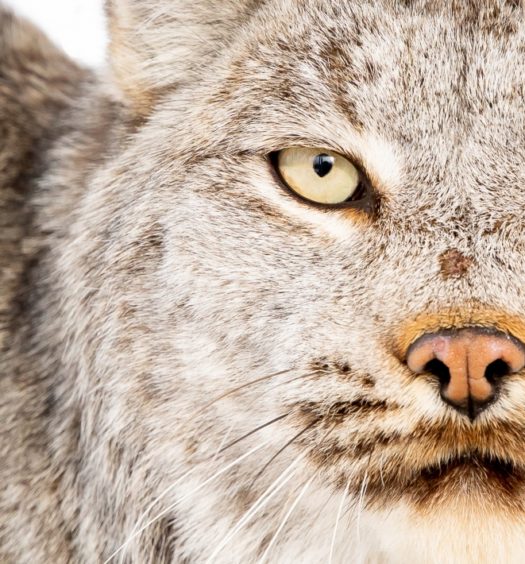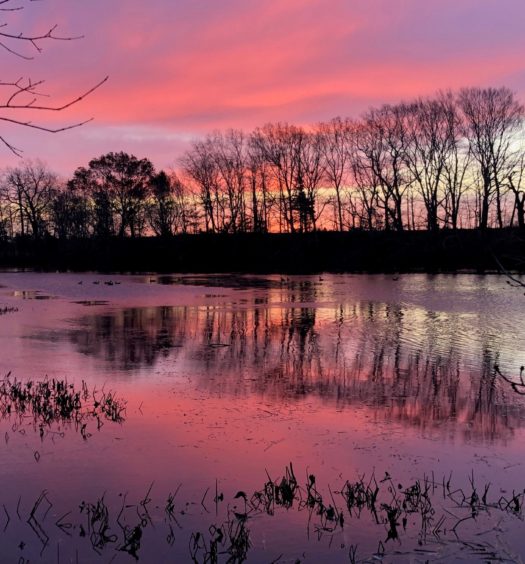In my prior article, I address what large mammals roamed the lands of the Narragansett, Wampanoags and Nipmucs in what is now Rhode Island before Roger Williams’s arrival at Providence in 1636, and how each species is faring today. That article focused on wolves, moose, mountain lions and bears.
This article (the second of a three-part series) discusses the disappearance of deer from Rhode Island. In doing my prior article, I was shocked to learn that by the late 1700s and well into the late 1800s, deer were extinct in Rhode Island. This article first discusses Roger Williams’s descriptions of these animals and how Native peoples hunted them. Then it discusses the disappearance of the deer and their incredible recovery.
Before the arrival of Europeans, Indians hunted for game only as they needed food and clothing. For generations there was a balance between large mammals and human hunters. The arrival of white settlers radically altered that balance, in Rhode Island, as elsewhere in New England and the rest of the East Coast of North America.
The fur trade introduced by white Europeans led Indians to increase their hunting of mammals, particularly beaver used for hats in Europe. Guns introduced by Europeans made killing easier for Indians and whites alike. The populations of fur-bearing animals, such as beaver, fox and mink, were decimated. White settlers then began clearing the land to create farms. Numerous forests were cut down and plowed into farms. Many mammals were hunted almost to the brink of extinction including, it is hard to believe today, deer. Deer had also been a staple of large mammals, such as wolves, bears and mountain lions.
From the time of the late 17th century into the 19th century, farming was vital to the state’s economy. This can be seen in Rhode Island’s forests today, where stonewalls are still prevalent. Wild mammals, needing forest to thrive and survive, lost most of their natural habitat.
This article, as does my previous one, relies on Roger Williams’s observations on A Key to the Language of America, written by Roger Williams in 1643, just seven years after he founded Providence. I used a wonderful 2019 publication published by Westholme Publishing called the Tomaquag Museum edition.
The Key was the first book published in English on Indian languages of North American Indians. Of course, Williams focused on the language of the Narragansetts, who dominated the southern mainland of Rhode Island and most of the rest of the mainland of Rhode Island at the time of, and before the arrival of, white settlers in southern New England. While the Narragansetts did hunt for wild birds and caught fish, the hunting of mammals, and the use of the them for food and clothing, was vital to them.
Roger Williams mentions in his Key plenty of species of animals that exist to this day. The most common animal hunted that Williams remarks on is deer. Deer was an important source of meat (venison) for the Narragansetts and their hides were commonly used for clothing.
Williams described two ways the Indians he met with hunted deer.
First, they pursue their game, especially deer, which is wonderfully plentiful in this country. They pursue with groups of twenty, forty, fifty, even two or three hundred hunters (as I have seen) pushing their game before them.
Second, they hunt with several types of traps. About harvest time, having observed the deer habitat in springtime and summer, a group of ten or twenty, and sometimes more, go together, and with wives and children also (if it is not too far), where they build up little hunting houses of bark and rushes (not comparable to their dwelling houses). Each man has a territory of two, three, or four miles, where he sets thirty, forty, or fifty traps, and which he baits with food the deer loves. He walks his territory to view his traps every other day.
Williams added that Indian hunters were “very careful where they lay their traps” and are very mindful of where they lie in wait in relation to the wind directions. As soon as a deer smells a hunter, the deer would “be gone.”
Shockingly, with the change of the landscape from forests to farms, the deer population in southern New England was “nearly eliminated for some time,” according to a Connecticut wildlife biologist.
Horace A. Keach, in his memoirs of growing up in Burrillville published in 1856, wrote about deer as if they were some kind of rare and exotic animal in his day Rhode Island:
When the forest was but partially cleared, our ancestors must have derived a great portion of their subsistence from the animals then abundant. They depended much upon venison. In A. D. 1728, in the reign of King George the Second, the colony made a law to preserve deer in this State. No deer were to be killed between January and June. A violation of this decree was punished by a fine of thirty dollars.
To a citizen of this town, it will not seem improbable when we suggest that the last deer of Rhode Island was shot on the margin of Wallum Lake. . . . The only deer that has been seen in Burrillville, within the memory of the “oldest inhabitant,” was a tame one owned by Capt. William Rhodes. He placed it in the centre of a load of goods, giving it a chance to put its head out; and so it was brought from Providence, to Rhodesville. For many years it was kept upon his premises, and was a great curiosity to the country people, many of whom had never seen a menagerie [meaning a collection of wild or unusual animals for exhibition].
There is a man at Brandy Hill in Thompson, Connecticut, whose grandfather told him about seeing deer in that region. They came out upon the plains between the Wallum Lake woods and the hill. . . . One man saw nine deer at one time run out from a clump of wood, near what is now called Mount Pleasant, and he could watch the tossing of their antlers but a few moments before they were so far down the valley as to be lost to his view.
Assuming the “oldest inhabitant” of Burrillville was eighty years old in 1856, that would have meant he was born in 1776. This recollection of Captain Rhodes capturing the last deer in the state, before Rhodes became a successful ship merchant by 1800 (when his large house was built in Harrisville), must have occurred in or around the 1790s.
Note Keach’s reference to the Act of 1728, in which, in order to preserve the deer population, no deer were to be killed between January and June. In 1757, due to the depreciation of money, the Rhode Island General Assembly adjusted the fine for violating the Act of 1728. This indicates that declining deer populations was still a concern. But the General Assembly never made any further reference to this act, suggesting the deer may have disappeared that so the act was no longer relevant.
I have not done for this article extensive research about the disappearance of deer from Rhode Island. But it does appear that deer did virtually disappear from Rhode Island based on Keach’s above recollections and the paragraph below after this one. Again, the eighteenth and nineteenth centuries was a time when agriculture was important in Rhode Island and when many what are now woods were then ploughed farms. It appears that by the turn of the nineteenth century, as the importance of farming in the state began to ebb, and farms started to be abandoned and forests regenerated on the land to some extent, deer slowly began to return to the state.
A writer in an article published in 1896 in the Providence Journal noted that “It is only recently that deer have been seen in Exeter and near Wickford . . . while last year one was reported to be at large in the vicinity of East Providence. A deer was also killed near Westerly in the fall of 1892.” This excerpt clearly indicates that deer were finally reappearing in the state in the 1890s.
The authors of a book on mammals of Rhode Island, published in 1962, wrote, “During the last century white-tailed deer reached an extremely low population to the point in Rhode Island and they may have even been absent from the State for a period of years. . . . By the turn of the century they were again present in Rhode Island and by the 1920’s they were quite numerous.” Based on Keach’s recollections and the quotes in the above article, it appears deer were absent from the state longer than the authors had thought.
Census figures bear out the decline in farms. In 1860, Rhode Island had about 5,300 farms, increasing to 6,300 in 1870 and 1875. However, the number of farms had declined to 5,300 in 1910 and sharply declined to 4,100 ten years later. The census for 1950 reported 2,600 farms in the state, and the number of acres of farmland had decreased from 330,000 in 1920 to 190,000 in 1950.
Thomas Dupree, retired from serving as chief of the Rhode Island Division of Forestry, was interviewed for a Rhode Island Monthly magazine article. He said that forests once covered 95 percent of the state prior to European colonization, but that by 1850, just 25 percent of the state’s forests remained after a century of clearcutting for farms. As agricultural lands were abandoned in the latter half of the 1800s, Dupree explained, forests began to regenerate in their place. He added that widespread fires through the early 1900s kept forests from dominating the landscape until fire suppression became common in the 1950s.
The deer population was slow to recover. Rhode Island estimated that there were just 661 deer in the state in 1942. A census conducted in 1960 indicated that there were about 1,500 white-tailed deer in the smallest state.
Today, there are many fewer farms in the Rhode Island and more forest lands than in the 1800s and early 1900s. Predators that preyed on deer—wolves and mountain lions—no longer do so in the state. Their biggest predators today are the occasional humans—driving cars that get in accidents with deer or hunting. As a result, the deer population is thriving.
Deer can grow to be large too. In 1997, an adult male whitetail deer weighing an estimated 315 pounds was killed by a hunter reportedly at Ashaway.
A recent Boston Globe article by Billy Baker called today a “golden age” for wildlife in New England. This is a bold statement. Of course, it is not true for some species, such as wolves, moose and mountain lions that used to roam and breed in Rhode Island but now no longer do. It is true for many other species, especially deer.
Baker wrote:
In the broadest sense, what we see in our backwoods and backyards today is a result of something called the North American Model of Wildlife Conservation, which eliminated commercial hunting and put states in charge of implementing policies to restore populations to optimum levels, and then keep them there.
For so-called game animals, this success has been remarkable. In 1900, when commercial hunting was essentially outlawed nationally, there were only 500,000 white-tailed deer left in the United States. Today there are 30 million. Massachusetts has an estimated 93,000, despite its small size and the country’s third-highest population density. That’s far more than we’ve ever had, specialists say, even before European colonization.
Baker emphasized that taxes imposed on hunters have helped to fund conservation efforts.
In 1967, seven deer were brought to Block Island under the auspices of the Town Council and state Department of Environmental Management. By 2013 the deer population had increased to around 1,000.
Now we have deer overpopulation. Deer have caused ecological damage on forests by eating young oaks and maples, as well as wildflowers and native shrubs. Todd McLeish, in a 2016 ecoRI News online article, wrote:
Brian Tefft, state wildlife biologist responsible for tracking deer statistics for the Rhode Island Department of Environmental Management, said the state is home to about 16,000 deer, some 15 per square mile, far more than the habitat can support. About 1,000 deer are killed annually in collisions with vehicles, and another 2,000 or so are harvested by hunters.
That they were once extinct within the state seems amazing now.
Sources
The version of Roger Williams’s A Key into the Language of America I used was the Tomaquag Museum Edition, published by Westholme Publishing of Yardley, Pennsylvania, in 2019. Its editors are Dawn Dove, Sandra Robinson, Lorén Spears, Dorothy Herman, and Kathleen J. Bragdon.
William Cronon, Changes in the Land, Indians, Colonists, and the Ecology of New England (New York, NY: Hill and Wang, 1983), 97-107.
“Wild Animals. Denizens of the Forest Found in Rhode Island. Game of The Ancient and Modern Hunter.” Providence Sunday Journal, November 15, 1896, p. 8.
“Outdoor Notes Moose Tracks Found in Eastern Coventry.” Providence Journal, Nov. 16, 1997 (315 pound deer caught).
Horace A. Keach. Burrillville: As it Was, and As it Is (Providence: Knowles, Anthony & Co., 1856).
For the Act of 1728, in addition to the above source, see An Act for the Preservation of Deer in this Colony, in Acts and Laws of His Majesty’s Colony of Rhode-Island and Providence Plantations in America (Newport, RI: James Franklin, 1730), page 158; Resolution, Feb. 1757 Sess., in John R. Bartlett, ed., Records of the Colony of Rhode Island and Providence Plantations in New England, vol. 6 (Providence, RI: Knowles, Anthony & Co., 1861), pages 21-22.
Todd McLeish. “Rhode Island’s Large Deer Population More Immediate Threat to State’s Forests Than Climate Change,” Dec. 1, 2016. In ecoRI News, online article at https://ecori.org/2016-11-29-deer-more-immediate-threat-to-forests-than-climate-change/#:~:text=Brian%20Tefft%2C%20state%20wildlife%20biologist,than%20the%20habitat%20can%20support.
“Deer Friendly.” (RI DEM estimate of 661 deer in 1942 and Block Island information). Online information at https://www.deerfriendly.com/deer/rhode-island.
U.S. 1950 Census: Rhode Island Statistics (including farm statistics from 1920) online at https://www2.census.gov/library/publications/decennial/1950/agriculture-volume-1/23230735v1p1ch5.pdf
Billy Baker, “The New Golden Age of Wildlife in New England,” Boston Globe, April 17, 2022. Online at https://www.bostonglobe.com/2022/04/17/metro/new-golden-age-wildlife-new-england/?s_campaign=8315.
John M. Cronan and Albert Brooks. The Mammals of Rhode Island. Wildlife Pamphlet No. 6. Rhode Island Department of Agriculture and Conservation, Division of Fish and Game, 1962.
John M. Cronan and Albert Brooks. The Mammals of Rhode Island. Wildlife Pamphlet No. 6. Wakefield, RI: Rhode Island Department of Natural Resources, Division of Conservation, 1968.
https://babel.hathitrust.org/cgi/pt?id=mdp.39015017475198&view=1up&seq=4&skin=2021.
Rhode Island Department of Environmental Management. Rhode Island Wildlife Action Plan (RI WAP). Online at http://www.dem.ri.gov/programs/fish-wildlife/wildlifehuntered/swap15.php.




























